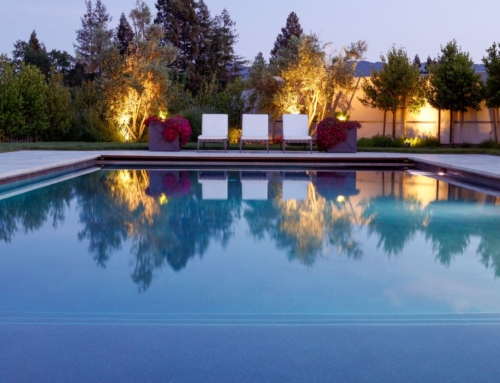Mission Revival Landscapes
California architecture has a long and complex history, from Victorian to Mission to Modern, and each style tells a story while bearing its own unique beauty. When it comes to the landscape, keeping in style with this architecture allows us to tell part of that story and highlight the elegance of a home. Here we explore Mission Revival homes and their gardens, and touch on the history of Mission-era colonization in California and its mark on our contemporary landscape.
During the late 19th and early 20th century, an increased interest in California’s historical buildings brought new inspiration to architects and designers. The resulting styles of Mission and Spanish Revival lend character to many Bay Area neighborhoods and continue to influence contemporary architecture today. Revival architecture can best be described as ‘eclectic’ – bearing Spanish Baroque, Moorish, and Pre-Columbian influences. And of course, like all good design, it continues to evolve.
The Revival Look
Chances are, even if you didn’t know Mission Revival was a thing, you might be able to point it out when you saw it. Tiled roofs, stucco and wrought-iron details would be your first hint, not to mention the arches, courtyards, and warm colors that are an instant clue. Suddenly, you’re transported to a sun-drenched Spanish terraza, expecting at any moment that tapas will appear (or is that just us?) When we work with the architecture of a Mission Revival home, we bring this look out into the landscape for a seamless effect. Above, Saltillo tile and ornate iron-work complement the roof tiles and the arches, while bright plantings are reminiscent of a Mediterranean or a Mexican courtyard.
Mission Landscapes
Another stylistic feature of Mission architecture is the focus on symmetrical garden layouts, often with clearly divided sections between geometric paths and more minimal plantings. The Spanish focus on symmetrical gardens can be traced back to Moorish (North African) influence in Spain after the 8th century CE. Many plants that we associate with the broader California landscape were also initially introduced by the original Mission architects – Grapes, Figs, Rosemary, Cypress, and Eucalyptus became trademark and remain common choices in Revival landscapes today. Other Mediterranean plants, grasses, and even semi-tropicals also seem right at home in this setting. The open nature of this landscape style is traditionally low-water by necessity to survive California’s dry summers. In some ways, it’s an ideal landscape style for our climate, much easier to care for than an English-style garden and a lot easier to irrigate.
Outdoor Living
In the age of Outdoor Living, Mission Revival lends itself beautifully to outdoor kitchens and cozy patios. Here, Mexican tiles adorn an outdoor fireplace, while warm furnishings and wrought iron candleholders complete the look. Mexican influence is notable in Mission style. Tropical color schemes and Mayan designs are most notable, as well as Saltillo tile (from the town of Saltillo in Coahuila.) A 2016 study by Teobaldo Ramirez Barbosa also suggests that in the early Mission period, Mayan dwellings may have had notable influence on Colonial architecture and forming the hybrid style that we consider “Mission” today. It’s not a stretch to imagine this combining of influences, which formed Mexican culture as we know it, when one inhabits an outdoor living space in this style.
Colonial Shaping Of The Landscape
By the time the original Mission architects reached California, they had already begun to reshape the broader landscape of Mexico and would move on to occupy and reshape the landscape of the Southwestern states. When we discuss Mission as a style, it’s important to remember the initial meaning behind the term, as well as the devastating impact of Catholic Missions on Native American populations. Architecture and human-made landscapes often tell these kinds of stories – stories of the populations whose power allowed their lasting imprint to remain. In recent years, it’s exciting to see a resurgence of California Native architecture and land use prioritization. It will be a privilege to see a resurgence of these cultural influences that were never lost, only repressed – the Revival movement of our generation.
Thank you as always to all of our readers, clients, and supporters in the Bay Area and beyond. If you have themes you would like to read about in our blog, shoot us an email and we will be honored to consider them for the blog. Happy Fall!










